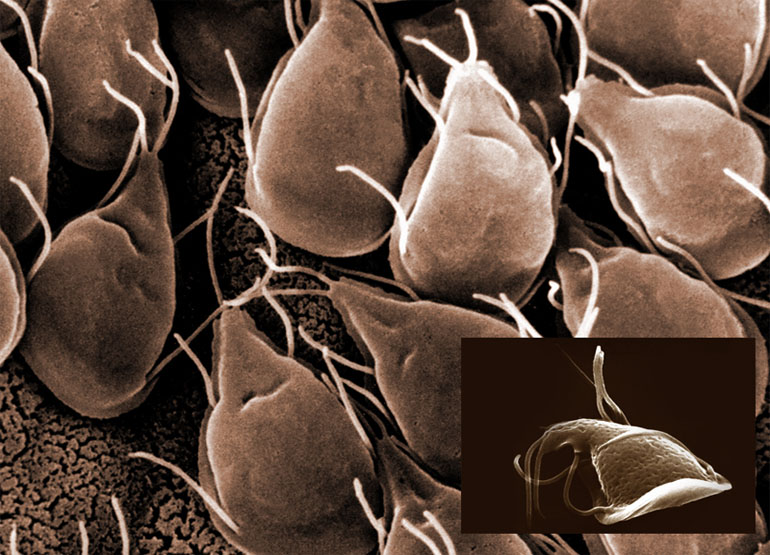Health Pages
The Symptoms of Giardiasis
The Symptoms of Giardiasis
The symptoms of Giardiasis, which may begin to appear 1-2 weeks after infection, include diarrhea, excess gas, stomach or abdominal cramps, and upset stomach or nausea. The result of these occurrences is weight loss and/or dehydration, which can be harmful if not treated immediately. The typical infection within an individual is around 2-6 weeks, but medication can decrease that time period.
A small number of infected individuals experience an abrupt onset of abdominal cramps, explosive, watery diarrhea, vomiting, foul flatus, and fever which may last for 3–4 days before proceeding into a more sub-acute phase. The majority of infected persons develop gradual symptoms that become recurrent or resistant.
In both the acute and insidious onsets of symptoms, stools become greasy and malodorous but do not contain blood or pus because giardiasis does not involve dysenteric symptoms. Watery diarrhea may cycle with soft stools and constipation.
Upper GI (gastrointestinal) symptoms including nausea, early satiety, bloating, substernal burning, egg-smelling halitosis, and acid indigestion may be exacerbated by eating and are generally present in the absence of soft stools.
Prevalence rates for giardiasis range from 20–30% in most developing countries and 2–7% in developed countries. The CDC estimates that in the United States there are more than 2.5 million cases of giardiasis annually. Giardiasis occurs worldwide with increased prevalence in areas with poor water treatment facilities and unsanitary conditions. The area of highest prevalence is the tropics and subtropics. Despite this, giardiasis does affect a large number of individuals living in highly developed nations with strong infrastructure and water systems. In the United States, giardiasis is the most commonly reported pathogenic protozoan disease.
High infection rates occur in hikers and backpackers in the United States. Giardiasis is a common infection in active outdoors population because of their exposure to areas inhabited by infected wild animals and ingestion of free flowing water which may contain cysts. Furthermore, giardiasis is common in tourists and business travelers to developing countries, especially Mexico, Southeast Asia, western South America and Russia. Also, an increased prevalence of giardiasis among homosexual men has been reported by a number of studies. Because infection may be caused by poor hygiene, giardiasis has high infection rates in daycare centers and nursing homes, though the groups most at risk for infection are overseas travelers and hikers.



